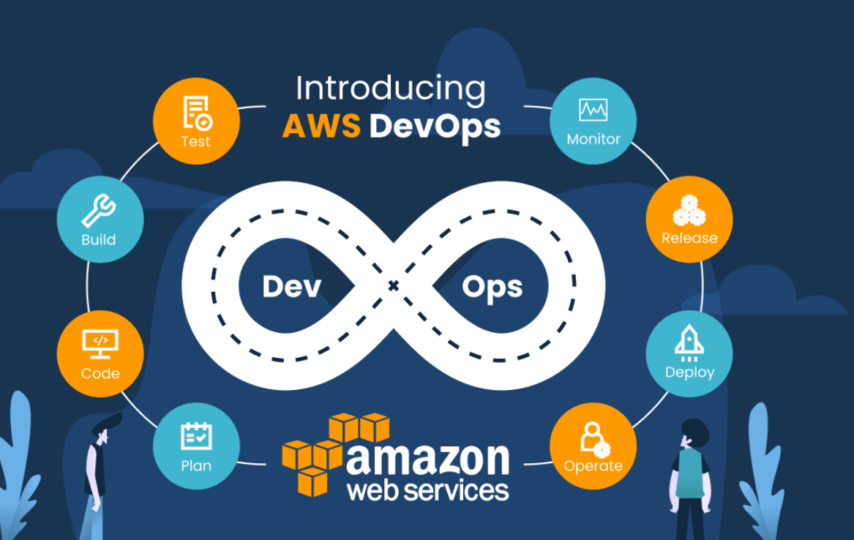Businesses utilizing AWS DevOps consulting services must balance cost optimization and performance enhancement in today’s fast-paced digital environment. A systematic approach to resource management inside AWS DevOps is required to achieve this balance.
Introduction:
AWS DevOps services provide businesses with unmatched flexibility and scalability, allowing them to create and deliver apps quickly.
It becomes essential to reduce expenses while preserving and, ideally, improving system performance as organizations develop and their cloud infrastructures expand.
AWS DevOps services’ large range of tools and functionalities aims to streamline operations and development processes. These services allow groups to streamline manual processes, foster teamwork, and speed up the production of high-caliber software.
Although streamlining the development and deployment process is the main objective of DevOps, resource management is frequently disregarded within this framework.
The Connection of Cost and Performance Optimization
Cost Optimization:
Cost optimization aims to reduce the costs of your cloud infrastructure and services. Cost efficiency is crucial in the AWS ecosystem since you pay for what you use.
- Resource Allocation:
Resource allocation entails thoughtfully allocating resources in accordance with the demands of your workloads and applications. This entails choosing the correct database types, storage configurations, and instance types based on the computational and storage requirements.
- Usage-Based Billing:
AWS uses a pay-as-you-go business model where expenses correlate directly with resource use. Utilizing cloud resources effectively to reduce wasteful spending is part of cost optimization.
Making sure that resources are scaled up or down as necessary helps avoid spending too much on resources that aren’t being used at all.
- Cost Management:
AWS provides tools like AWS Cost Explorer and AWS Cost and Usage Reports that provide insights into your spending habits. These reports can be monitored often to help identify cost drivers and potential areas for improvement.
You can proactively manage expenditures and make knowledgeable judgments regarding resource allocation by creating budgets, keeping an eye on spending patterns, and analyzing past data.
- Reserved Resources:
Savings Plans and Reserved Instances (RIs) are tools that let you agree to use a certain set of resources over a predetermined time frame in exchange for a price break over on-demand pricing.
You can save money by properly allocating resources for predictable workloads. RIs come in various pricing tiers to suit your needs, including Standard, Convertible, and Scheduled.
Performance Optimization:
Performance optimization aims to maximize your systems and applications’ effectiveness, dependability, and efficiency.
- Response Time:
A positive user experience is largely dependent on optimizing response times. It entails ensuring that your services and apps react quickly to user requests.
Low response times can be attained via various techniques, such as effective code execution, improved database queries, and content delivery networks (CDNs).
- Scalability:
To optimize performance, systems must be scalable to meet demand. AWS DevOps services offer resources like Elastic Load Balancing and AWS Auto Scaling to do this. You can use auto-scaling to automatically change the number of resources in response to traffic changes.
As a result, your applications can manage a range of workloads without suffering performance degradation.
- Availability and Reliability:
Excellent availability and reliability go hand in hand with excellent performance. To do this, fault-tolerant architectures must be created to endure failures with minimal disturbance.
AWS DevOps services offer services like Amazon Route 53 for DNS routing and AWS Elastic Beanstalk for application management to maintain continuous availability and reliability.
- Efficient Resource Utilization:
Efficient resource utilization is part of performance optimization. This entails using your infrastructure’s CPU, memory, and other resources best.
Your applications can function more effectively by utilizing caching, compression, and load-balancing methods to make the most of the underlying infrastructure without overtaxing it.
Balancing Cost and Performance Optimization
The junction symbolizes the crucial point at which performance and cost optimization converge, producing the dynamic equilibrium necessary for efficient cloud management.
- Act of Balancing:
The importance of striking the proper balance between cost and performance cannot be overstated. To ensure you don’t overpay or jeopardize the performance of your apps, you must make careful decisions.
This equilibrium necessitates a comprehensive strategy that considers a range of variables, such as instance kinds, storage options, and database options.
- Trade-Offs:
When negotiating this junction, businesses frequently face trade-offs. The decision between high-performance resources that cost more money and resources that are cost-optimized but may provide less performance is a typical trade-off.
The choice depends on the particular demands of your applications and workloads.
- Continuous Iteration:
Finding the right balance requires constant effort. Business requirements change over time, and cloud infrastructure is dynamic.
A successful cloud management strategy must include ongoing monitoring, analysis, and optimization.
Conclusion:
Optimizing expenses while boosting performance in the world of AWS DevOps services is not a one-size-fits-all endeavor. Because the demands and priorities of every organization are different, resource management techniques must be customized to meet particular needs.
Businesses can successfully negotiate the challenging cost and performance optimization landscape by adopting AWS DevOps services and the aforementioned tactics.
By doing this, businesses will streamline their operations and put themselves in a position for development and innovation in the rapidly changing digital environment.
Cost-performance parity in AWS DevOps services is more than just a goal; it’s a strategic advantage that drives businesses forward in the current cloud computing environment.
Frequently Asked Questions (FAQs)
Why is Cost optimization Critical for AWS DevOps Services?
Cost management is essential since it aids businesses in managing their cloud expenses. Ensuring that resources are distributed effectively and avoiding overprovisioning or underutilization eventually reduces costs.
How Does User Experience Affect Performance Optimization?
The user experience is directly impacted by performance optimization. Increased customer happiness and trust result from a smoother and more responsive application thanks to faster response times, scalability, and high availability.
Can you simultaneously achieve cost optimization and performance improvement?
Yes, it is possible to fulfill both goals. With the use of tools like Auto Scaling, cost analysis, and effective resource utilization strategies, AWS DevOps services offer the means to strike a balance between cost optimization and performance enhancement.
Which AWS DevOps Services Aim to Optimize Performance?
AWS DevOps services like Elastic Load Balancing, Amazon CloudFront, and AWS Auto Scaling help businesses improve performance by ensuring resources are dynamically changed, traffic is distributed effectively, and latency is decreased.
What Are the Ways in Which AWS DevOps Services Can Improve Competitiveness in the Digital Landscape?
Organizations may provide quick, dependable apps and services while successfully managing expenses using AWS DevOps services. Thanks to this competitive edge, they can prosper in a digital environment that is continually changing.








